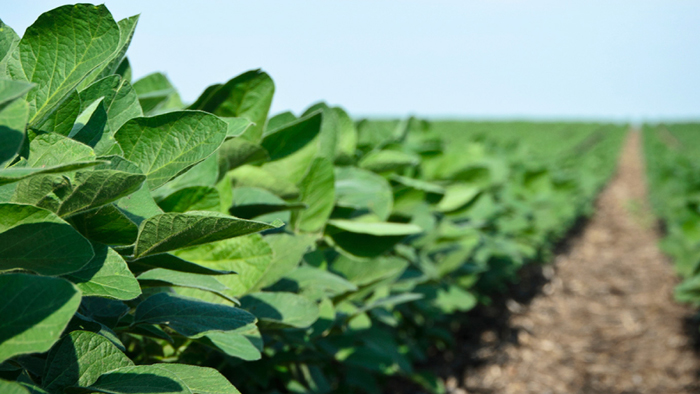The Importance of Scouting Your Soybean Crop

By Shari Narine
Crop scouting soybeans is about protecting your investment.
“It’s a large investment you’re putting in the ground. In order to maintain that yield potential you need to make sure that you are employing the right pest management practices. So it’s maintaining and building your yield potential and also going back to the decisions you made and either validating them or making improvements for following years,” says Kristen Podolsky, production specialist with Manitoba Pulse and Soybean Growers.
Crop scouting needs to be done regularly throughout the entire season.
“If you only crop scout once a month and there’s been an insect or disease that’s been building for three weeks, you may be past the most economical point of managing that disease or insect and then the result will be yield loss. So it comes down to economics,” says Podolsky.
Different points in the season present different challenges.
In the first month following seeding, the key concerns for scouting are weed control, insects, and diseases.
“Soybeans are fairly non-competitive so keeping the crop weed-free for the first few weeks is definitely critical for yield potential,” says Podolsky.
Insects, such as wireworms or cutworms, can affect the plant stand as can diseases. Soil-borne pathogens can lead to pre-emergence damping off as the seedlings are attacked. Root rot pathogens are of particular concern in saturated wet soils.
As the season goes on, checking for nodulation by digging up the plant roots should be done in the R1 stage. If scouting reveals there aren’t any nodules or they are not functioning because the grower has forgotten to inoculate then an in-season nitrogen application can be done.
Following that, weed control should be carried out as the canopy closes. The focus should be on folio leaf diseases as well as defoliating insects. Anything that impacts the leaf area that’s photosynthesizing could impact yield.
In July and August, the time of rapid nutrient and water uptake, monitoring for nutrient deficiencies, and any physiological stress is important.
In September, growers need to take yield estimates and monitor maturity.
“Make sure, whatever your typical frost date is, you want to be going out to your field and making sure that crop has reached physiological maturity. (This way) you know that your variety selection was right and that you’d be safe from any frost that’s most likely to happen at that time,” says Podolsky.
Crop scouting can lead to remediation during the season in specific situations.
“In season it’s really about pesticide management,” says Podolsky.
Herbicide use can be altered to more effectively control weeds. Alteration could include choosing a herbicide other than glyphosate if the grower is concerned about glyphosate resistance or, if glyphosate is used commonly in the rotation, then a different mode of action as a tank-mix partner could be chosen. Adjusting timing of herbicide application can also be effective in controlling weeds, particularly if there’s volunteer canola in the soybeans.
“Those have been proven effective if they’re timed well,” says Podolsky.
Grasshoppers and aphids can also be controlled during the season. Although soybeans have a fairly good threshold for those types of insects, crop reports can let the growers know if levels in the area are reaching thresholds. If that’s the case, appropriate action, such as use of insecticide for the insects or a fungicide for disease control, can be taken.
However, there are other times when scouting is solely preparation work for the next season.
There is nothing that can be done about iron deficiency sclerosis (detected early in the season) or potassium deficiency (detected late in the growth stage) during the season. But next season, if soybeans are to be grown in the same field, a different variety may be chosen to combat iron deficiency sclerosis, while a potash application could deal with potassium deficiency.
Crop scouting is about being aware of whether or not the target plant stand has been reached.
“If you’ve reached your target, things went well,” Podolsky adds. “And if it’s a lot lower than what your target was you’re going to want to try to trouble shoot the reasons why.”
Some of those reasons could be poor quality seed, seedling diseases, equipment issues, cracking, or dry seed.
Scouting is a vital job and it’s important that a grower keeps in mind specific targets for specific times of the season. The scouting calendar provided by Manitoba Pulse and Soybean Growers can prove to be a valuable tool.
“There could be 10 different things you could be looking for, but if you prioritize what the key pests are and the pests that have the most potential to occur and cause damage, that’s a way to focus your scouting efforts,” says Podolsky.


